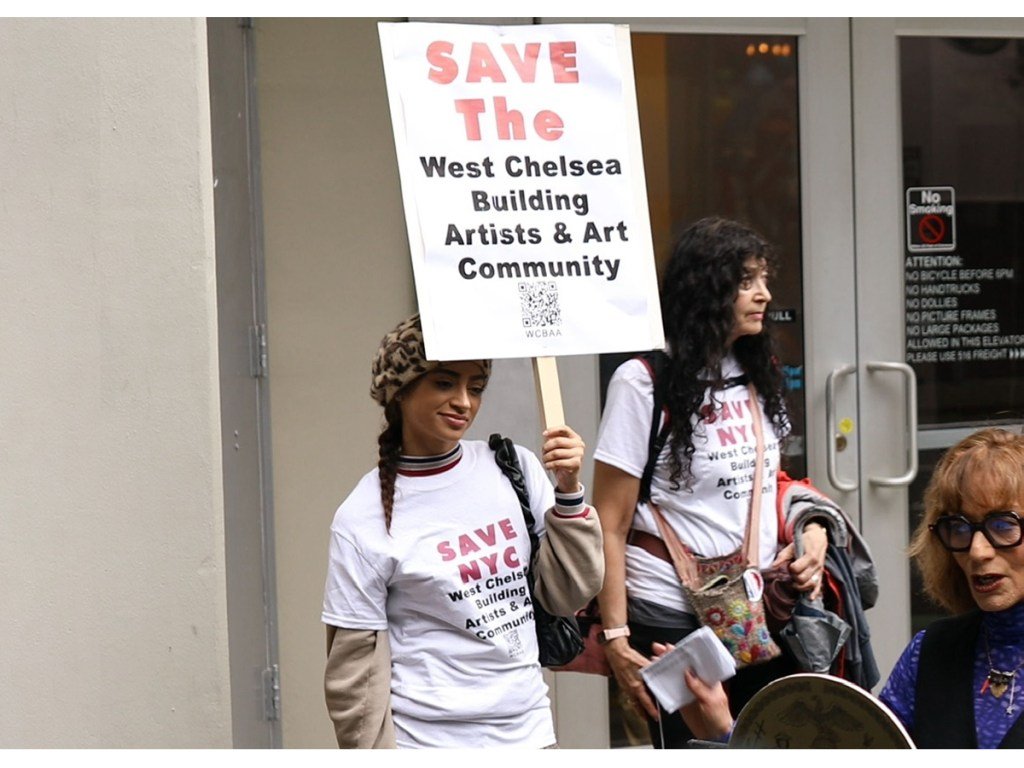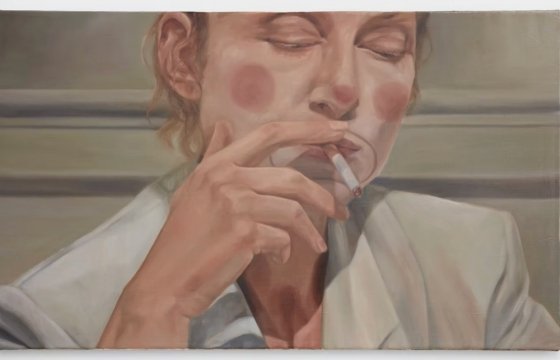


An esteemed nonprofit wants to turn a West Chelsea arts building on the market into an artist residency program while keeping longtime tenants in their studios.
The Wolff Building at 508-534 West 26th Street was listed on the market earlier this year, a move contested by artists and residents. The Elizabeth Foundation for the Arts submitted an offer in April to purchase it and establish a studio program similar to its West 39th Street flagship, where artists have obtained subsidized workspaces through an annual application process since 1998.
“It is extremely important to preserve what I believe is the largest concentration of creative workers in Manhattan,” Anne-Brigitte Sirois, a principal at Art State LLC who helped formulate the foundation’s bid with Eagle Point Properties and Art State, told Hyperallergic. “Artists contribute immeasurable cultural value to New York City and play a critical role in sustaining Chelsea’s character and real estate strength.”
Under the proposal, the Elizabeth Foundation would own the 362,000-square-foot building, while Eagle Point Properties, a private real estate firm, would act as a co-borrower and guarantor, and all three parties would share its governance. The offer amount was not disclosed.
Foundation officials envision keeping the historic warehouse’s roughly 200 existing artists, designers, and galleries while introducing shared cultural spaces and professional development resources, including curatorial visits, peer critiques, and networking opportunities.
“This model is not limited to the Wolff Portfolio. It is replicable,” Sirois said. “If not here, then in other buildings where artists and creative businesses already cluster.”
The site’s future remains in the hands of attorneys representing the estate of Raymond and Gloria Naftali, who put the lot up for sale last December for $170 million.
The Naftalis purchased the commercial building a half-century ago and converted it into artist studios, attracting prominent tenants including photographer Hiroshi Sugimoto, painter Ross Bleckner, and conceptual artist Glen Ligon, as well as galleries such as Berry Campbell, Galerie Lelong, and Morgan Lehman.
Gloria Naftali, who co-founded Chelsea’s Greene Naftali gallery, had hoped the building would remain an artist haven in perpetuity, but did not include a legal directive requiring her wish in her will. Instead, attorneys representing Naftali’s estate claim the building is not profitable enough to support the arts-related initiatives of the Raymond and Gloria Naftali Foundation, of which they are both trustees (Raymond died in 2003).

Three years after Naftali’s death, the building’s status as an art hub remains uncertain. Four offers have emerged, including the Elizabeth Foundation’s bid, as well as one from Bedrock Mini-Storage, an art storage facility one block west of the Wolff Building, sources familiar with the negotiations said. Bedrock declined to comment for this story.
So far, the Naftali trustees have not accepted any offers.
“We continue to explore options for the property that would allow us to preserve a substantial portion of the building for the artist community and gallery space,” Derek Wolman, a partner at Davidoff, Hutcher & Citron, which represents the estate, said in a statement.
The uncertainty has caused some galleries to question whether they should renew their long-term leases or search for alternatives. After Naftali died, trustees inserted a clause into new and renewed leases that would allow any new owner to clear out tenants with only 180 days’ notice.
“It’s hard for these galleries because they plan exhibitions at least a year out, if not two, and they guarantee these exhibitions on that timeline,” Paul Michael Graves, an artist and Wolff Building tenant who is making a documentary film about the building, told Hyperallergic. “That is one of the primary reasons why galleries are looking to leave before any new deal is announced.”
Others are planning to stick it out. Morgan Lehman Gallery recently signed a five-year lease and has no plans to move.
“We have been in four locations in the last 20 years in Chelsea, and this building works best for our needs,” said Jay Lehman, Morgan Lehman’s co-founder. “We are hopeful that whoever buys the building will keep it as an affordable creative hub as Gloria had envisioned.”
Most artists are staying put in their studios, too. Tenants held a demonstration with Chelsea Councilman Erik Bottcher in front of the building in June to protest its pending sale. Little action has happened since then, but three tenants were evicted over the summer, the trustees said.
The building hasn’t lacked activity this month. Fashion Week designers have taken up several vacant spaces, while its semi-annual open studios event returns this weekend.
Graves wonders whether this will be the last open studios the building experiences.
“I have relationships with people in the building, I get wisdom and advice from them. Everything a community stands for exists here,” he said. “It’s not just a matter of whether artists need spaces.”


